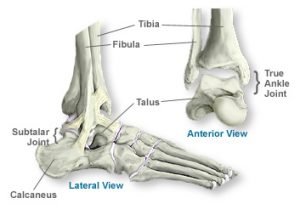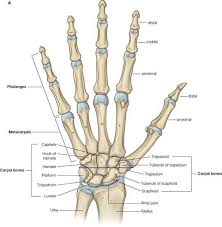Extensor Tendonitis
 Within the hands and feet of the human body lay the extensor tendons. Extensor tendons of the feet attach lower extremity muscles. The extensor tendons within the hands move the fingers and wrists. The extensor tendons of the feet connect the muscles at the front of the leg to the toes. Extensor tendonitis of the hands occurs from overuse either from daily work, daily activities, or athletics that require a lot of wrist movement. Extensor tendonitis of the feet typically occurs from standing for prolonged periods of time or wearing shoes that do not fit correctly.
Within the hands and feet of the human body lay the extensor tendons. Extensor tendons of the feet attach lower extremity muscles. The extensor tendons within the hands move the fingers and wrists. The extensor tendons of the feet connect the muscles at the front of the leg to the toes. Extensor tendonitis of the hands occurs from overuse either from daily work, daily activities, or athletics that require a lot of wrist movement. Extensor tendonitis of the feet typically occurs from standing for prolonged periods of time or wearing shoes that do not fit correctly.
Symptoms of Extensor Tendonitis
Every individual processes pain differently. The symptoms of extensor tendonitis in the foot and hand can differ between patients. Typical symptoms of extensor tendonitis in the hand and feet include the following.
Symptoms of Extensor Tendonitis in the hand include:
- Pain in the hand
- Stiffness in the hand
- Wrist pain
- Numbness or tinging in the hand
Symptoms of Extensor Tendonitis in the foot include:
- Pain in the top of the foot
- Weakness in the foot
- Pain while moving toes
- Increased pain with being on foot for prolonged period of time
Causes of Extensor Tendonitis
The causes of extensor tendonitis vary depending on the location. Extensor tendonitis within the hand typically arises from overusing the hand. Overusing the hand often occurs from having a job that requires constant movement of the hands and wrists. Athletics can also cause extensor tendonitis of the hand.
Extensor tendonitis within the foot often occurs from wearing shoes too small in size or overuse of the foot. When the shoe squeezes the foot, the shoe can add pressure to the extensor tendons. With constant pressure on the extensor tendons, the tendons get inflamed. The inflammation of the extensor tendons cause the pain.
Diagnosing extensor tendonitis
To diagnose extensor tendonitis, a foot and ankle or hand and wrist orthopedic specialist performs a physical examination of the patient. Patients should always see an experienced physician. Following the physical exam, the doctor uses diagnostic testing. For diagnostic testing, a doctor often starts with an X-Ray of the effected area. Often doctors use the diagnostic testing to rule out more serious ailments. If the doctor suspects more ailments than extensor  tendonitis, the physician may also order an MRI or use ultrasound to view soft tissues of the hands and/or feet.
tendonitis, the physician may also order an MRI or use ultrasound to view soft tissues of the hands and/or feet.
Treatment of extensor tendonitis
To treat extensor tendonitis, the doctor starts with resting the hand or foot and using Non-Steroidal Anti-Inflammatory medications. Patients may also utilize ice to help decrease swelling and pain. If those modalities do not work, the treating physician may prescribe physical therapy. In conjunction with physical therapy, the doctor may administer steroid injections.
To view a list of all insurances that AOA Orthopedic Specialists accept, click HERE. To schedule an appointment online, click HERE.
EXPERIENCING foot & ankle or hand & wrist PAIN? CALL 817-375-5200 TO SCHEDULE AN APPOINTMENT WITH AN AOA ORTHOPEDIC SPECIALIST TODAY!
F.A.Q.
What is Extensor Tendonitis?
Extensor Tendonitis, also known as Extensor Tendinitis, is a painful condition that occurs when the extensor tendons, responsible for extending your fingers or toes, become inflamed or irritated. It’s a common overuse injury that can result from activities like typing, playing musical instruments, or repetitive gripping motions.
What are the symptoms of Extensor Tendonitis?
Common symptoms of Extensor Tendonitis include pain, tenderness, and swelling in the affected area, which is often the back of the hand, wrist, or top of the foot. You may also experience difficulty moving your fingers or toes. Symptoms can range from mild discomfort to severe pain, affecting your daily activities.
How is Extensor Tendonitis treated?
Treatment for Extensor Tendonitis typically involves rest, ice, and over-the-counter anti-inflammatory medications to reduce pain and swelling. Immobilization through the use of splints or braces may also be recommended. Physical therapy exercises to strengthen and stretch the affected tendons can help with recovery. In some cases, corticosteroid injections may be considered. Severe or chronic cases may require surgical intervention, but this is less common.

